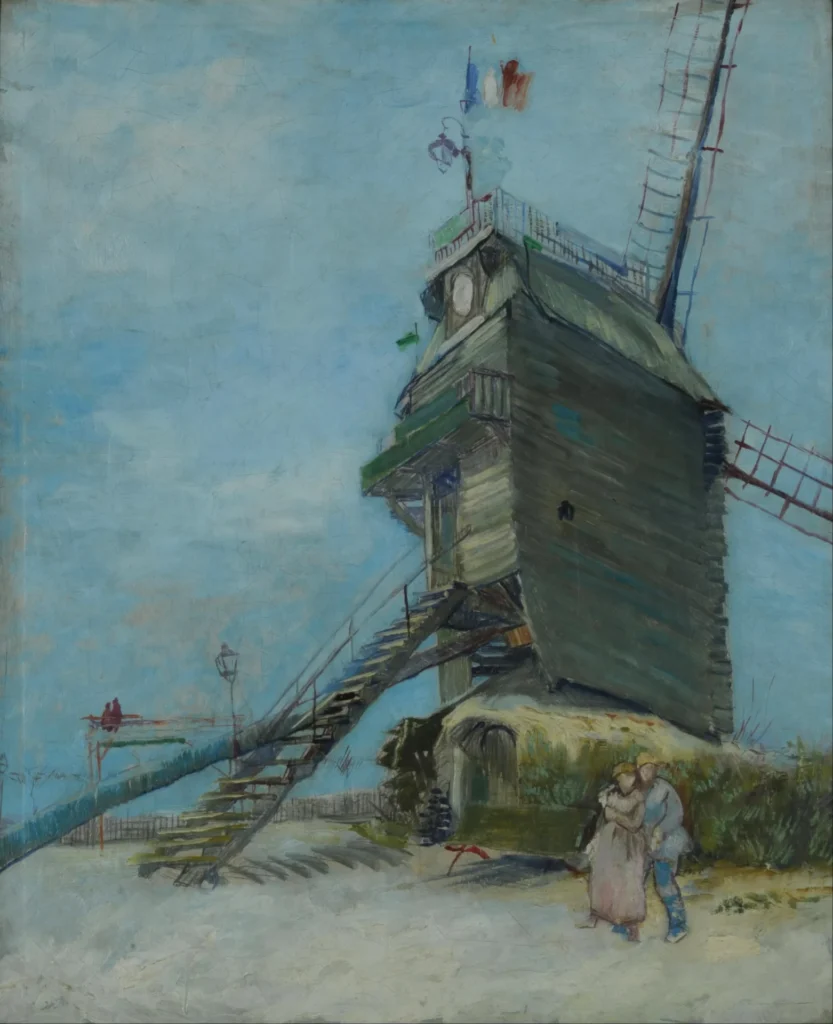Le Moulin De La Galette (ca. 1886)
The Le Moulin de la Galette series by Vincent van Gogh consists of multiple paintings created in 1886, inspired by the popular windmill in Montmartre, Paris. Capturing the lively atmosphere of the area, these works demonstrate Van Gogh's shift towards a brighter palette and expressive style influenced by Impressionism. The artworks depict the Moulin de la Galette's vibrant social scene, marked by dynamic light and color that invite viewers into the artist's world.
Year 1886
About the Artwork
Did You Know
Liked what you see? Add it to your collection.
Enjoyed reading? Share it.
... continued
Location and Inspiration
The paintings depict the Moulin de la Galette, a windmill located on the hill of Montmartre in Paris. This area was close to Van Gogh's residence on rue Lepic, which made it a convenient and inspiring subject for his art.
Artistic Style and Influence
These paintings reflect Van Gogh's transition from his earlier, somber style in the Netherlands to a more vibrant and expressive approach influenced by Impressionism. The works feature lighter colors, unrestrained brushstrokes, and an emphasis on capturing light and movement. The use of complementary colors and impasto techniques to create a relief effect are also notable.
Multiple Versions
Van Gogh created several versions of 'Le Moulin de la Galette.' Here are a few notable ones: One version is housed at the Museo Nacional de Bellas Artes in Buenos Aires. Another is at the Kröller-Müller Museum in Otterlo, Netherlands. A third version is at the Alte Nationalgalerie in Berlin. There is also a version titled 'The Blute-Fin Windmill, Montmartre' at the Kelvingrove Art Gallery and Museum in Glasgow.
Composition and Details
The paintings often feature the windmill, sometimes with the second windmill, Moulin à Poivre, visible in the background. The compositions include rural elements and sometimes figures, all captured with Van Gogh's characteristic bold brushstrokes and vivid colors.
Cultural Context
The Moulin de la Galette was not only a windmill but also a popular entertainment venue with a dance hall and outdoor café. It was a favorite spot for artists, including Pierre-Auguste Renoir and Henri de Toulouse-Lautrec, who also painted scenes of the location. These works are part of Van Gogh's broader 'Montmartre' series, which reflects his fascination with the landscapes and life around his Parisian home.










